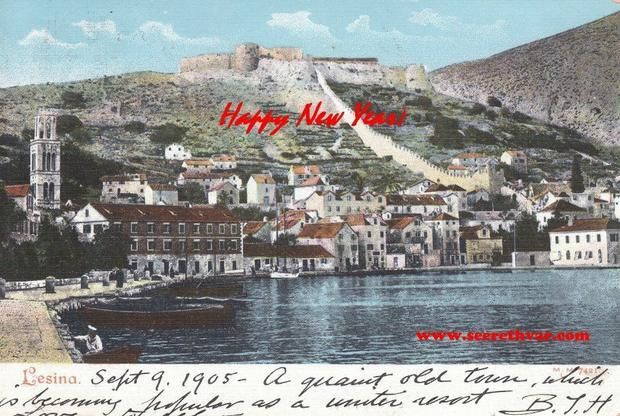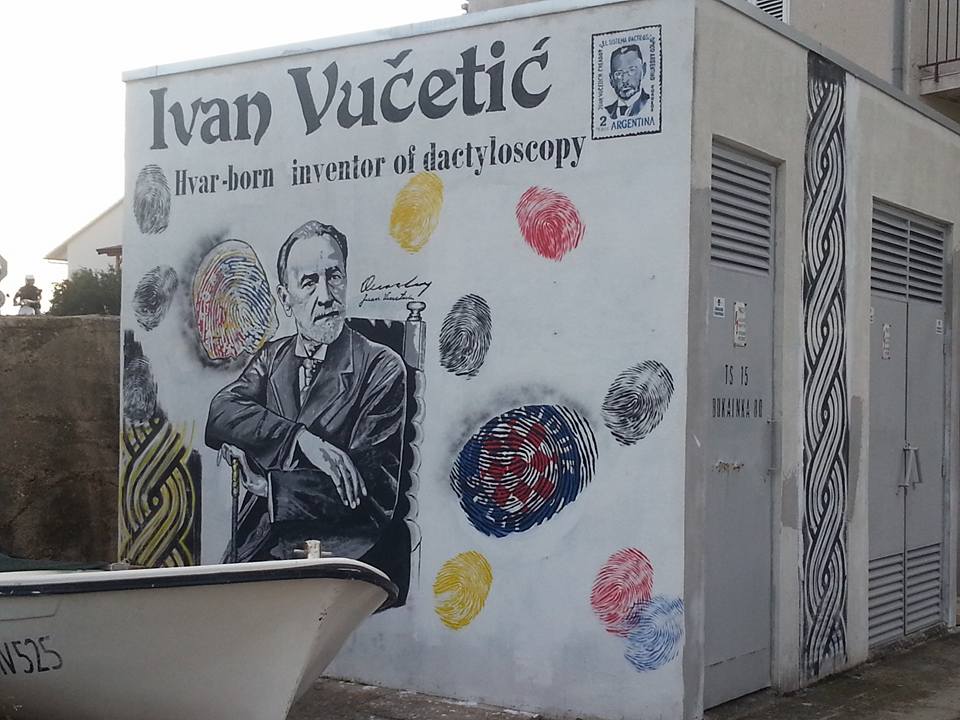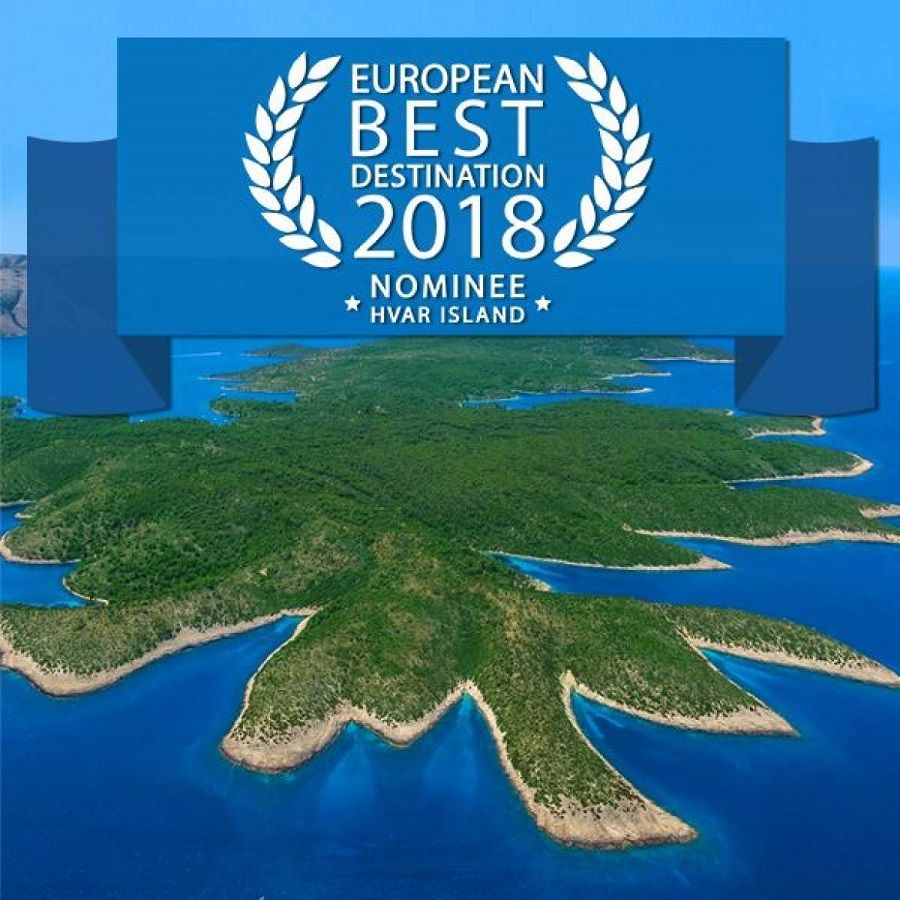2018 is shaping up to be a special year for the island of Hvar, as HINA reports on plans to celebrate 150 years of organised tourism in Europe on January 2, 2018.
Among its many claims to fame (sunniest island in Europe, island with most UNESCO heritage in the world, home to the first public theatre in Europe), Hvar also has a somewhat surprising historical fact – it is the birthplace of organised tourism in Europe. The 150th anniversary of the founding of the Hvar Health Society in 1868 will be marked in some style later this year. But first, some background, from my guidebook, Hvar: An Insider’s Guide:
With the founding of the Hvar Health Society on May 15, 1868, the first organised tourism in Europe came into being, tourism based on health and recuperation, rather than historical sites. While individual travel had a long tradition among the upper classes, the first organised tourist association in France only came into existence in Cannes in 1907 (Syndicat d’Initiative). The birth of organised tourism in Europe was announced as follows:
Having surrendered Venice, in all its vast dominions Austria does not have a single place on the coast suitable for people with chest illnesses to stay during the winter season, despite the fact that there are several such places in Istria and Dalmatia.
After due consideration, and with the approval of the most capable doctors and excellent naturalists, it has been established that nowhere is better than Hvar for those with chest illnesses. With its location, the particular nature of the town and the special features of its climate, it can not only rival Venice, Pisa, Nice and so on, but can often outshine them.
Guided by these reasons, and inspired by patriotism and humanity, in the belief that we can offer people from Austria and Northern Germany a superior and more accessible resort, we are establishing in Hvar, Dalmatia, a joint stock company called the Health Society in Hvar.
The aim of the Health Society is to provide everything needed for visitors to have a pleasant stay in this town, so that their sufferings are eased and their diseased lungs can benefit from our mild climate and health-giving air.
For this purpose, the Society will have at its disposal comfortable accommodation for visitors, providing all services, and sparing no effort to fulfil all their desires.
By October several houses will be ready and equipped for this purpose.
Hvar, 15th May 1868.

(Photo credit – Secret Hvar)
The first hotel for the new society was a private house on the main square in Hvar Town, owned by the Samohod-Duboković family, which opened for business on October 15, 1868, after a full renovation. The new hotel had 13 single rooms with heating and a restaurant, and was staffed by a cook, two waiters and a chambermaid from Trieste.
Funds for a more expansive hotel were sought but progress was slow and the temporary hotel was moved to the former military building on the Fabrika in 1872, with private accommodation fulfilling any shortfall in beds.
The Hvar Health Society petitioned the Court in Vienna for financial support to build a proper hotel, asking that the Empress Elizabeth become patron of the new hotel, allowing it to bear her name. She agreed and the first royal donation was made in 1869 with this reply:
To the honourable Management of the Health Society in Hvar, Dalmatia
Her Majesty the Empress and Queen has very generously decided to accept patronage of your Health Society, based in Hvar, and to allow the Clinic built by this Society to bear the name “Stabilimento igienico imperatrice Elisabetta” (The Empress Elizabeth Institution of Health). As a mark of her most gracious acknowledgement of the worthy aim of the aforementioned Institution, it is her pleasure to grant a gift for it of 200 florins from her Royal Highness’ personal funds.
As it is my honour to inform the honourable Management of the Health Society in Hvar of the glad news of Her Majesty’s decision relating to the request of the 20th of last month, and to pass on the above-mentioned generously approved sum, I ask you kindly to sign and return the enclosed confirmation of receipt of the same.
Gödöllö, 10th November 1869
B. Napcsa, on behalf of Her Majesty
Construction of the new hotel, where the ruins of the former Ducal Palace once stood, was slow, from plans drawn up in 1880 to completion of the first part of the building in 1898 and formally opened on April 1, 1899.
The fully completed Kur Hotel Kaiserin Elizabeth opened in 1903, furnished from Trieste and boasting 35 beds, bathrooms, a reading room, restaurant and coffee-house in the old loggia.
Some of the hotel’s rules, included in the 1905 rulebook (printed in Croatian, Italian and German), required guests to be clean and tidy, not to smoke at lunch, play dangerous games inside the hotel, bring in animals or hang washing outside
The Society’s early efforts were both impressive and successful, with Hvar becoming known as the Austrian Madeira. The majority of guests were German, Austrian, Czech, Hungarian and Croatian, enticed to Dalmatia by some excellent tourism promotion by the Hvar Health Society.
In addition to the various leaflets, notices and reviews in Austrian journals, the first guide to Hvar, in German, was printed in Trieste in 1899, followed by a second with photographs in 1903. Things to do on Hvar included night fishing, bowling, the shooting range, concerts and music on the hotel’s terrace, and the art collection at the Franciscan Monastery.
The tourism boom inspired others to jump on the bandwagon and the privately-owned Hotel Kovacic opened in 1914 on the waterfront, as did the Palmizana Manor House on the Pakleni Islands in 1906.
The financial dividends of successful tourism were somewhat reinvested in the town, and there were major improvements in this period, including fixing the promenades to the Franciscan Monastery and Majerovia Bay. Improvements were also made to the town’s bathing beach, changing huts and tennis courts, trees were planted and ferry connections improved.
The most high profile visitor to Hvar in the early years was Emperor Franz Joseph I himself, who sailed in for a night in 1875, to be greeted with a spectacular reception, including fireworks, leading him to address the people of the town:
Thank you for the heartfelt welcome organized by this historic town. I have always believed in the sincere and patriotic feelings of these people, and I guarantee them my Imperial mercy and benevolence.’
After a successful start, the Society’s fortunes changed after 1910 and a combination of constant debts and the First World War led to the sale of the hotel to the owner of Hotel Royal in Zagreb in 1918.
“We hope and are doing a lot so that the positive tourism trends continue and believe that the 150th anniversary of tourism in Hvar will be an additional or new driver for people to visit our city and our island,” Hvar Mayor Rikardo Novak told HINA.
If you are planning a trip to Hvar this year, check out the dates May 10-15. Apart from being one of the most pleasant times to visit before the peak season crowds, early to mid-May will see the bulk of the 150 celebrations. May 10 is always a party in Hvar Town, as well as the unofficial opening of the tourist season (which now starts MUCH earlier) and the Feast of St. Prosper, patron saint of the town, and May 15 marks the exact 150th birthday. There will be an array of concerts and events to mark the occasion during this week. Flights are usually much cheaper than offseason, and the hotels of Suncani Hvar have more chance of being available at more affordable rates.

Suncani Hvar Hotels are also entering into the 150 birthday spirit. The island’s biggest hotel group is currently renovating Hotels Amfora and Adriana, while Hotel Palace (where the whole organised tourism in Europe story began all those years ago) will be reopening as the island’s first five-star hotel. Looking for some early booking deals? Check out what is on offer on the Suncani Hvar website.
While the 150 birthday will be the main event, there are two even older significant birthdays to be celebrated this year. The father of dactyloscopy (fingerprinting to me and you) was a Hvar son. Ivan Vucetic, who emigrated to Argentina was born in Hvar Town in 1858, and he would have been 160 in July this year. 1858 is the same year which dates back to Hvar’s observatory, one of the oldest in Europe.
Add to all this the usual fabulous offer of this magical island, and it is no wonder that the island of Hvar has been nominated at Europe’s best destination for 2018. Voting begins soon!









